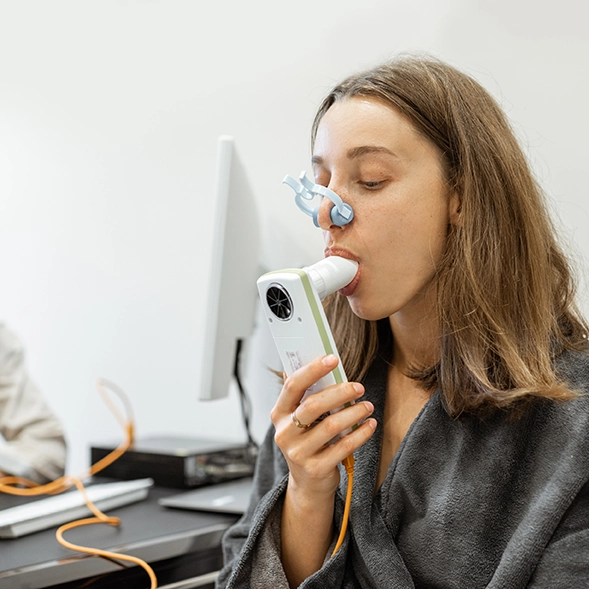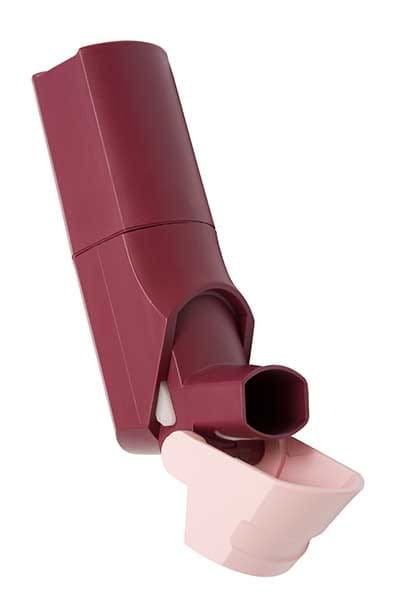ERS 2024: Dual Phosphodiesterase 3 & 4 Inhibitors the New Kind of COPD blockers
Speaker- Dr. Paola Rogliani
In the treatment of Chronic Obstructive Pulmonary Disease (COPD), traditional therapies like inhaled bronchodilators and corticosteroids often fall short in addressing underlying inflammation. Newer treatments have explored options like orally administered phosphodiesterase-4 (PD4) inhibitors, but these were limited by a low therapeutic ratio and safety concerns. A novel treatment has emerged: a first-in-class bifunctional phosphodiesterase 3 (PD3) and PD4 inhibitor. This innovative molecule combines bronchodilator and anti-inflammatory effects into a single therapy, significantly advancing COPD management. It was approved by the Food and Drug Administration (FDA), representing a promising new option for patients with severe COPD prone to exacerbations.
Phosphodiesterase enzymes regulate intracellular cyclic adenosine monophosphate (cAMP), Guanosine 3’,5’-cyclic monophosphate (cGMP), and their derivatives, with multiple variants involved in a complex signaling network. Inhibiting more than one phosphodiesterase could enhance therapeutic efficacy and reduce side effects. Combined inhibition of PD3 and PD4 showed additive and sometimes synergistic anti-inflammatory effects compared to inhibiting each enzyme alone. PD4 was predominantly found in inflammatory cells such as eosinophils, neutrophils, and lymphocytes, while PD3 was present in smooth muscle and both in epithelial cells. Despite testing several PD3 and PD4 inhibitors, many did not progress to clinical use due to issues with efficacy or safety.
Ensifentrine was the only bifunctional molecule developed and approved for COPD. Delivered via nebulizer, it exhibited an affinity PD3 that was nearly 3,700 times higher than for PD4, demonstrating predominantly bronchodilator activity with notable anti-inflammatory effects. In both experimental and clinical settings, ensifentrine synergized with commonly used bronchodilators, suggesting its potential as an add-on treatment. Despite concerns about cardiovascular side effects related to PD3 inhibition, ensifentrine was considered safe and well-tolerated.
The journey of these molecules to FDA approval was long and complex, involving extensive research into their mechanisms affecting both inflammation and bronchodilation. This process included rigorous clinical trials, culminating in a positive result from the Phase 3 trial.
Early trials provided evidence that ensifentrine had potential as both a bronchodilator and anti-inflammatory agent. In vivo experiments showed it nearly completely inhibited the contractile response to electrical field stimulation. In vitro studies demonstrated that ensifentrine inhibited lipopolysaccharide (LPS)-induced Tumor Necrosis Factor (TNF)-alpha release from human monocytes in a concentration-dependent manner, underscoring its potential as an anti-inflammatory agent.
In studies involving healthy volunteers and patients with pulmonary obstructive diseases, ensifentrine demonstrated potential as an anti-inflammatory and bronchodilator. The anti-inflammatory effect was evident in healthy volunteers, although the neutrophil reduction in induced sputum after the LPS challenge was only partial. The treatment reduced neutrophils, macrophages, eosinophils, and lymphocytes. In patients with mild to moderate COPD, ensifentrine showed substantial bronchodilation, highlighting its potential as a significant advancement in COPD treatment.
In experimental settings, ensifentrine was tested for its potential synergistic action with commonly used bronchodilators. In an ex-vivo model of isolated human bronchi, combining ensifentrine with glycopyrronium demonstrated a synergistic effect, enhancing the relaxation of both medium and small airway smooth muscle cells. Phase 2 randomized controlled trials (RCTs) showed that adding ensifentrine to long-acting bronchodilators like salbutamol or ipratropium significantly improved mean peak Forced expiratory volume 1 (FEV1) and other functional parameters compared to monotherapy. When added to tiotropium, nebulized ensifentrine significantly improved lung function in a dose-dependent manner, with the 3 mg dose showing the greatest benefit. Additionally, ensifentrine with tiotropium improved quality of life, particularly in respiratory-related activity and impact domains. In these studies, ensifentrine was administered twice daily via nebulizer, while tiotropium was used once daily with a portable device, indicating a difference in treatment regimens.
Phase 3 trials evaluated ensifentrine efficacy versus placebo in moderate to severe COPD patients who were symptomatic and on bronchodilators (LAMA or LABA) with or without ICS. These trials demonstrated positive results. Treatment with ensifentrine led to significant improvements in lung function, measured by the FEV1 area under the curve, by week 12. Ensifentrine also improved symptoms and quality of life at week 24 in one trial but not in another. At the same time, dyspnoea, measured by tolerable daily intake (TDI), showed similar improvements in both studies. Safety was favorable, with adverse events reported at similar rates in both ensifentrine and placebo groups, and no gastrointestinal issues, unlike those seen with oral phosphodiesterase inhibitors. Although not a primary endpoint, the study revealed a reduction in moderate to severe exacerbations and increased time to first exacerbation over 24 weeks in both trials.
A meta-analysis of Phase 2 and Phase 3 trials combined data from over 2000 COPD patients across five RCTs. This analysis, which included ensifentrine doses ranging from 0.6 to 6 milligrams, demonstrated significant improvements in FEV1. Specifically, the 3 mg approved dosage analysis showed both statistical and clinical significance in enhancing trough FEV1. Meta-regression revealed that the improvements were dose-dependent, more pronounced in males, and more effective in patients with less impaired lung function, suggesting potential benefits for earlier-stage COPD.
Using peak or average FEV1 area under the curve analysis as the primary outcome, rather than trough FEV1, represents a different approach to evaluating ensifentrine efficacy. Additionally, not combining ensifentrine with other long-acting bronchodilators like glycopyrronium and excluding COPD exacerbations as a pre-specified outcome in the trials may warrant further investigation. The lack of pre-specified post-hoc analyses could affect the interpretation of future subgroup data. Nevertheless, ensifentrine approval marks a significant advancement in COPD treatment. If proven to be an effective anti-inflammatory agent, it could lead to modifications in the current triple therapy regimen, providing a new and potentially safer treatment option for COPD patients.
European Respiratory Society Congress 2024, 7–11 September, Vienna, Austria



